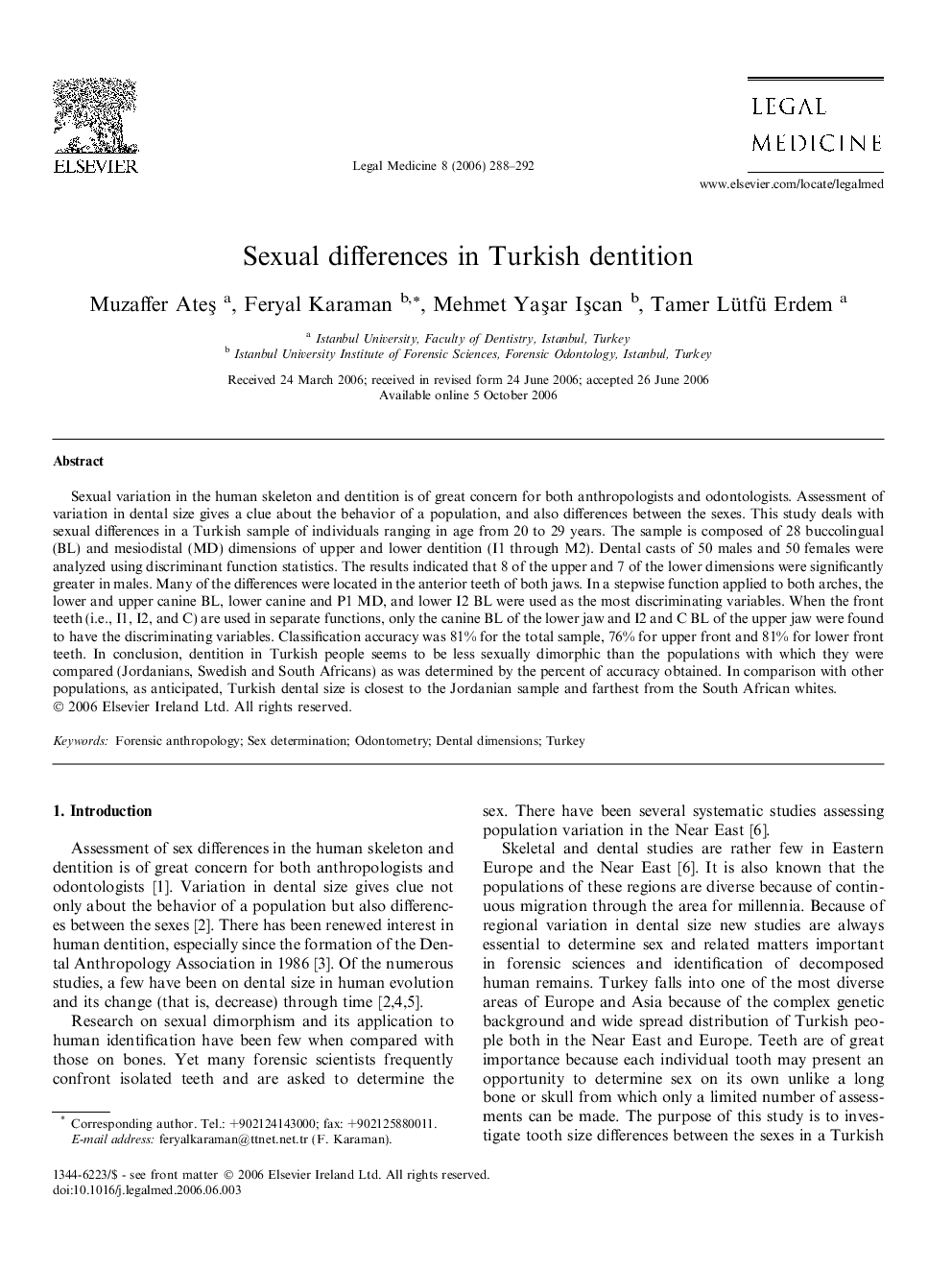| Article ID | Journal | Published Year | Pages | File Type |
|---|---|---|---|---|
| 104171 | Legal Medicine | 2006 | 5 Pages |
Sexual variation in the human skeleton and dentition is of great concern for both anthropologists and odontologists. Assessment of variation in dental size gives a clue about the behavior of a population, and also differences between the sexes. This study deals with sexual differences in a Turkish sample of individuals ranging in age from 20 to 29 years. The sample is composed of 28 buccolingual (BL) and mesiodistal (MD) dimensions of upper and lower dentition (I1 through M2). Dental casts of 50 males and 50 females were analyzed using discriminant function statistics. The results indicated that 8 of the upper and 7 of the lower dimensions were significantly greater in males. Many of the differences were located in the anterior teeth of both jaws. In a stepwise function applied to both arches, the lower and upper canine BL, lower canine and P1 MD, and lower I2 BL were used as the most discriminating variables. When the front teeth (i.e., I1, I2, and C) are used in separate functions, only the canine BL of the lower jaw and I2 and C BL of the upper jaw were found to have the discriminating variables. Classification accuracy was 81% for the total sample, 76% for upper front and 81% for lower front teeth. In conclusion, dentition in Turkish people seems to be less sexually dimorphic than the populations with which they were compared (Jordanians, Swedish and South Africans) as was determined by the percent of accuracy obtained. In comparison with other populations, as anticipated, Turkish dental size is closest to the Jordanian sample and farthest from the South African whites.
